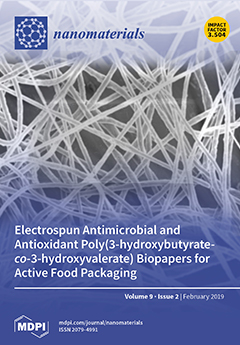In the present in vivo study, we provide a comparison of toxicological consequences induced by four different types of spherical nanoparticles (NPs)—silver nanoparticles (AgNPs, 40 ± 6 nm), nickel (NiNPs, 43 ± 6 nm), cobalt oxide (Co
3O
4NPs, 60 ±
[...] Read more.
In the present in vivo study, we provide a comparison of toxicological consequences induced by four different types of spherical nanoparticles (NPs)—silver nanoparticles (AgNPs, 40 ± 6 nm), nickel (NiNPs, 43 ± 6 nm), cobalt oxide (Co
3O
4NPs, 60 ± 6 nm), and chromium oxide (Cr
3O
4NPs, 50 ± 5 nm)—on freshwater fish
Labeo rohita. Fish were exposed to NPs (25 mg/L) for 21 days. We observed a NPs type-dependent toxicity in fish. An altered behavior showing signs of stress and a substantial reduction in total leukocyte count was noticed in all NP-treated groups. A low total erythrocyte count in all NP-treated fish except for Co
3O
4NPs was discerned while a low survival rate in the case of Cr
3O
4NP-treated fish was observed. A significant decrease in growth and hemoglobin were noticed in NiNP- and Cr
3O
4NP-treated fish. A considerable total protein elevation was detected in NiNP-, Co
3O
4NP-, and Cr
3O
4NP-treated groups. An upgrading in albumin level was witnessed in Co
3O
4NP- and Cr
3O
4NP-treated groups while a high level of globulin was noted in NiNP- and Co
3O
4NP-exposed groups. In all NP-treated groups, a depleted activity of antioxidative enzymes and pathological lesions in liver and kidney were noticed.
Full article






